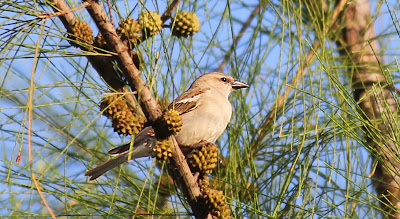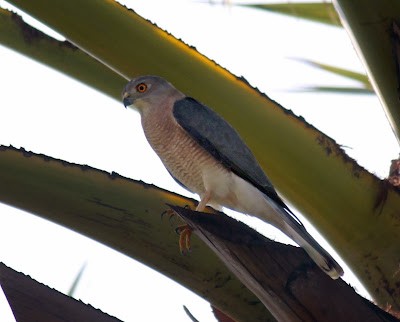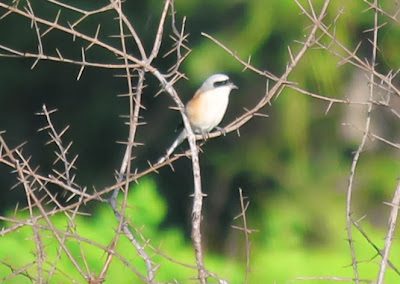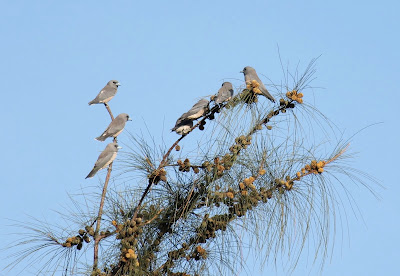Audio Credit : Ramit Singal
http://http://www.xeno-canto.org/recordist.php?id=FPDBIILGCX| Golden-fronted Leafbird | |
|---|---|
From Wikipedia, the free encyclopedia
| |
| 01 | Is a species of leafbird. |
| 02 | It is a common resident breeder in India, Sri Lanka, and parts of Southeast Asia. |
| 03 | Its habitat is forest and scrub. |
| 04 | It builds its nest in a tree, laying 2-3 eggs. |
| 05 | This species eats insects and berries. |
| 06 | The adult is green-bodied with a black face and throat bordered with yellow. |
| 07 | It has an orange forehead and blue moustachial line, but lacks the blue flight feathers and tail sides of Blue-winged Leafbird. |
| 08 | Young birds have a plain green head. |
| 09 | Has a narrower yellow border to black face. |
| 10 | The throat is black and it has a blue sub-moustachial stripe and duller orange forehead. |
Audio Credit : Vir Joshi, Amreli, Gujarat, India
http://http://www.xeno-canto.org/recordist.php?id=ZXGYSIOPJJ| Ashy Woodswallow - சாம்பல் தகைவிலான் | |
|---|---|
From Wikipedia, the free encyclopedia
| |
| 01 | Sometimes called the Ashy Swallow-shrike is a woodswallow which is found in south Asia. |
| 02 | Has a short curve bill and a short square tail and long wings. |
| 03 | Usually seen perched in groups, high on powerlines, tall bare trees and most often in areas with a predominance of tall palm trees. |
| 04 | In flight, the broad base to the wings gives it a very triangular outline |
| 05 | This stocky woodswallow has an ashy grey upperparts with a darker head and a narrow pale band on the rump. |
| 06 | The underside is pinkish grey and the short slaty black tail is tipped in white. |
| 07 | The finch-like bill is silvery. |
| 08 | The first primary is very short. |
| 09 | There are no geographic variations in plumage and no subspecies have been designated. |
| 10 | Males and females are indistinguishable in the field. |
| 11 | Young birds appear barred on the underside. |
| 12 | Habitat and distribution |
| 13 | Woodswallows are found in a range of habitats from the plains to about 2000 m, over cultivated areas, in forest clearings and often in areas with tall palm trees. |
| 14 | The species is widely distributed across India, Nepal, Sri Lanka, Thailand, Burma, Laos, Malaysia and China. |
| 15 | Length 190 mm (7.5 in), Weight 37–42 g (1.3–1.5 oz) |
| 16 | Ashy Woodswallows are usually seen in small groups. |
| 17 | Several birds may sit huddled side-by-side. |
| 18 | Insects may be caught in the beak, transferred and held in their feet, torn up with their bill and swallowed without returning to the perch. |
| 19 | Known to visit bird baths. |
| 20 | Although mainly feeding on insects, they may take nectar from flowers |
| 21 | The breeding season is March to June. |
| 22 | The nest is a shallow cup placed at some height. |
| 23 | The clutch consists of 2–3 greenish white eggs with brown spots. |
| 24 | Both parents take part in nest building, incubation and feeding the young. |
| 25 | They will mob larger birds such as crows and birds of prey |
| 26 | The song consists of a varied combination of wheezy notes that may include imitations of the calls of other birds. |
| 27 | The usual call is shrill nasal chewk. |
| 28 | They make seasonal movements, possibly in response to rainfall. |
Audio Credit : Frank Lambert, ??
http://http://www.xeno-canto.org/recordist.php?id=YTUXOCTUEM| Yellow-eyed Babbler | |
|---|---|
From Wikipedia, the free encyclopedia
| |
| 01 | Found in groups in open grass and scrub in south Asia. |
| 02 | Size is about 18 centimetres (7.1 in) long with a short bill and a long graduated tail. |
| 03 | The body above is brown and the wings are cinnamon coloured. |
| 04 | The lores and supercilium are white and the rim of the eye is orange-yellow in adult birds. |
| 05 | The beak is black. |
| 06 | The underside is whitish buff. |
| 07 | The central tail feathers are about twice as long as the outermost. |
| 08 | The sexes are similar. |
| 09 | Has yellow nostrils and is paler in plumage. |
| 10 | The usual habitat is grassy or thorny scrub both in dry and wet regions as well as farmland. |
| 11 | Found mainly on the plains but can be found in the lower hills |
| 12 | Length 140 mm (5.5 in), Weight 15–21 g (0.5–0.7 oz) |
| 13 | Usually seen in small groups of five to fifteen. |
| 14 | Usually found inside bushes. |
| 15 | Feed mainly on insects, berries as well as nectar. |
| 16 | When capturing insects, they may hold them down with their feet. |
| 17 | The group constantly produces a series of cheeping or churring calls. |
| 18 | During the breeding season, (June to August), the song is a strong whistling twee-twee-ta-whit-chu, |
| 19 | The colour of the inside of the mouth is said to turn from orange-brown to black during the breeding season. |
| 20 | They appear to nest cooperatively, the nest being a deep cone made with grass and lined with fine fibre. |
| 21 | The nest is wedged between upright stems, the vertical stems being incorporated into the wall of the nest. |
| 22 | The outside of the nest is well covered in cobwebs. |
| 23 | The usual clutch is four but varies from three to five. |
| 24 | The eggs are pinkish white with chestnut-red patches. |
| 25 | Both parents take part in incubation and feeding the young. |
| 26 | The eggs hatch after about 15–16 days and the young birds fledge after about 13 days. |
| 27 | Adult birds have been seen feigning injury presumably to detract predators. |
| 28 | Birds roost communally in the centre of a bush, all facing in the same direction and sitting side by side. |
| 29 | Members of a group will preen each other. |





















